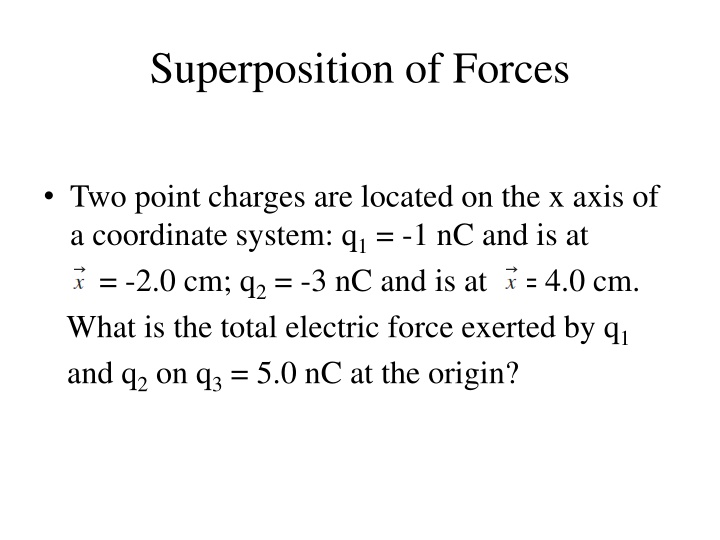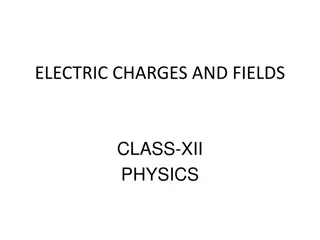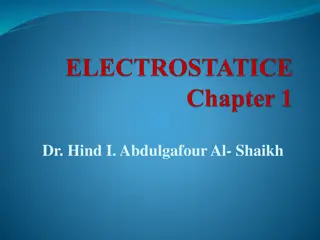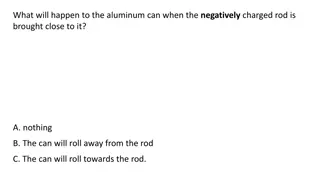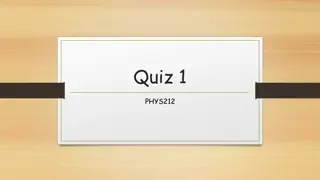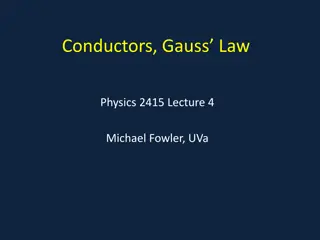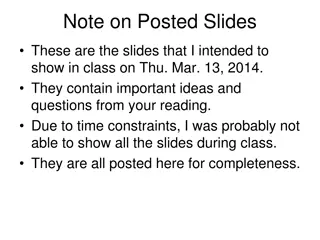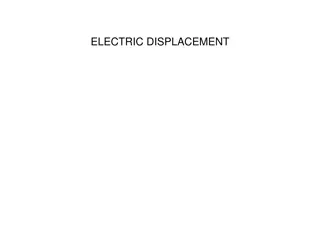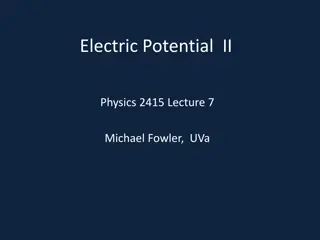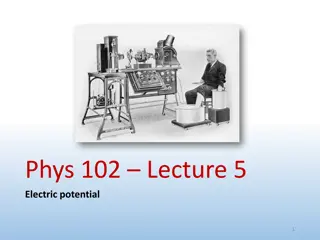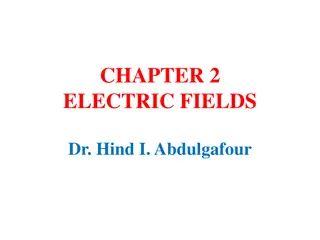Electric Charges and Fields in Physics
Explore topics such as superposition of forces, electric fields, particle interactions, potential differences, and cathode-ray tube concepts in physics involving charges, forces, and fields. Understand scenarios like calculating total electric force between charges, finding electric fields at specific points, particle interactions based on mass and charge, potential differences for electron acceleration, and electron deflection in cathode-ray tubes.
Download Presentation

Please find below an Image/Link to download the presentation.
The content on the website is provided AS IS for your information and personal use only. It may not be sold, licensed, or shared on other websites without obtaining consent from the author.If you encounter any issues during the download, it is possible that the publisher has removed the file from their server.
You are allowed to download the files provided on this website for personal or commercial use, subject to the condition that they are used lawfully. All files are the property of their respective owners.
The content on the website is provided AS IS for your information and personal use only. It may not be sold, licensed, or shared on other websites without obtaining consent from the author.
E N D
Presentation Transcript
Superposition of Forces Two point charges are located on the x axis of a coordinate system: q1= -1 nC and is at = -2.0 cm; q2= -3 nC and is at = 4.0 cm. What is the total electric force exerted by q1 and q2on q3= 5.0 nC at the origin?
Fields A point charge q = -8.0 nC is located at the origin. Find the electrical field at the field point x = 1.2 m and y = -1.6 m
Different But the Same A positron (the electron s antiparticle) has mass 9.1 x 10^-31 kg and charge q = 1.6 x 10^-19 C. Suppose a positron moves in the vicinity of an (alpha) particle, which has charge 3.2 x 10^-19 C. The alpha particle s mass is more than 7000 times that of the positron, so we assume that the particle remains at rest.
Continued When the positron is 1 x 10^-11 m from the particle, it is moving directly away from the particle at 3 x 10^6 m/s. (a) What is the positron s speed when the particles are 2 x 10^-10 m apart? (b) What is the positron s speed when it is very far from the particle?
Realize Your Potential (a) An electron is to be accelerated from 3 x 106m/s to 6 x 106m/s. Through what potential difference must the electron pass to accomplish this? (b) Through what potential difference must the electron pass if it is to be slowed from to a halt?
Tube TVs An electron with an initial speed of 6.5 x 106m/s is projected along the axis midway between the deflection plates of a cathode-ray tube. The potential difference between the two plates is 22 V and the top plate possesses positive charge. (a) What is the force on the electron when it is between the plates?
How They Work (b) What is the acceleration of the electron when acted on by the force in part (a)? (c) How far above the axis has the electron moved when it reaches the end of the plates (d) At what angle with the axis is it moving as it leaves the plates? (e) How far above the axis will the electron strike the fluorescent screen S?
What Ya Think? If you double the amount of charge on a parallel pate capacitor, what happens to its capacitance? (i) It increases; (ii) it decreases; (iii) it remains the same; (iv) the answer depends on the size or shape of the conductors
Plates The plates of a parallel-plate capacitor in vacuum are 5.00 mm apart and 2.00 m2in area. A 10.0-kV potential difference is applied across the capacitor. Compute (a) the capacitance; (b) the charge on each plate; and (c) the magnitude of the electric field between the plates
